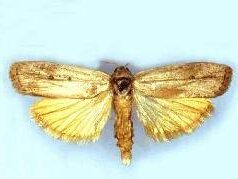Arecanut
Spindle bug
Symptoms of damage
Identification of pest
Nymphs – light violet brown, greenish yellow with border of the body
Adult - brightly coloured red and black.
Management

Root grub
Symptoms of damage
Identification of pest
Adult beetle is chestnut brown in colour.


Management
Cholam or white mite
Symptoms of damage
Management

Inflorescence caterpillar
Symptoms of damage


Management
